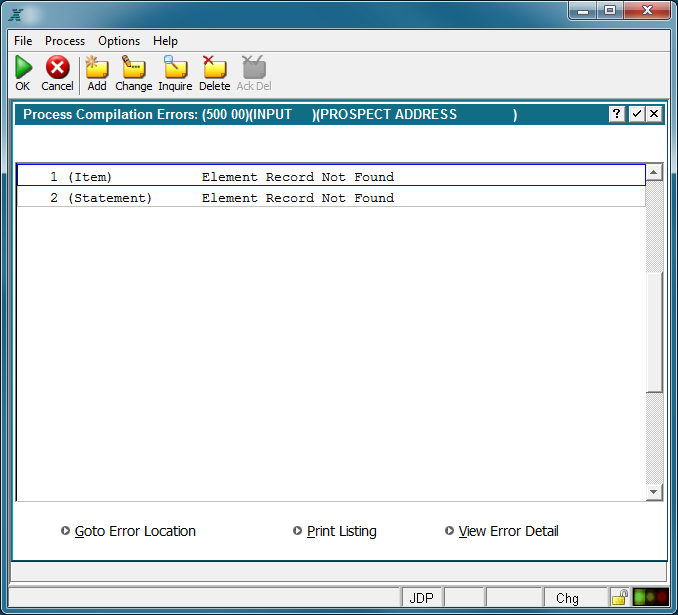Chapter 4-1: ILF Integration |
Resolving Compilation Errors When a process compiles, some compiler-generated errors may result. The system notifies the user (or the designer, if the designer executed the process) of each of the errors encountered during compilation by displaying and highlighting the erroneous statements, and by providing an error message describing the nature of each error. At the end of compilation, if any errors occurred, an error listing (labeled Process Compilation Errors) is displayed on your screen as shown below. In this example a work field that was used in the process was deleted from the Data Dictionary.
A Process Compilation Errors Screen From this screen, there are three options available to you. Two of the options provide methods for correcting compilation errors: Goto Error Location. You can position the cursor to a specific error and select goto error location to go directly to the ILF Editor and the offending item via a hypertext link. Make the appropriate modifications to the ILF code. When you are finished, you can force the process to compile again by selecting END until you return to the original error display. Repeat these steps until all errors have been corrected, then select END from the Process Compilations Error screen to start the recompile. Print Listing. You can print the error listing by selecting the print listing option. Using the printed listing, return to the process that the ILF routine is associated with and invoke the editor by selecting the appropriate event point option. Use the editor functions (refer to The IFL Editor) to make appropriate modifications to the ILF routine and then re-execute the process. This is an iterative process that you may repeat as many times as required until compilation is successful. The third option is: View Error Detail. By positioning the cursor on a specific error and selecting this option, APPX provides you with more detail regarding the selected error. After viewing the details, select Enter to return to the Process Compilation Errors Screen. |
Application Design Manual "Powered by Appx Software"1133 ©2006 By APPX Software, Inc. All Rights Reserved |
